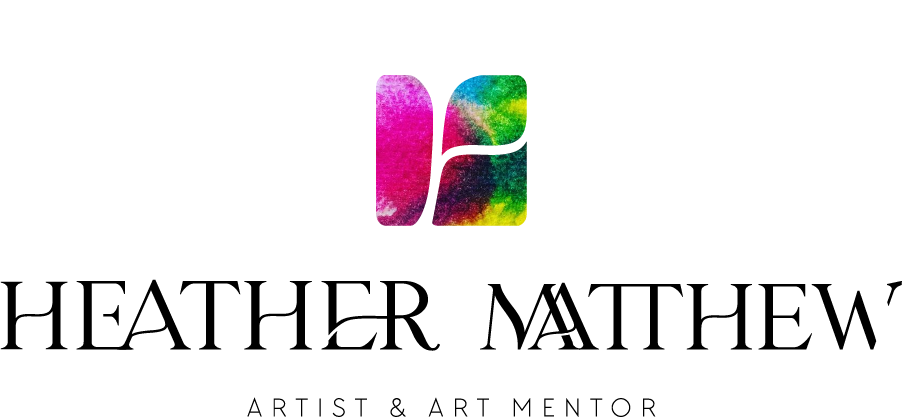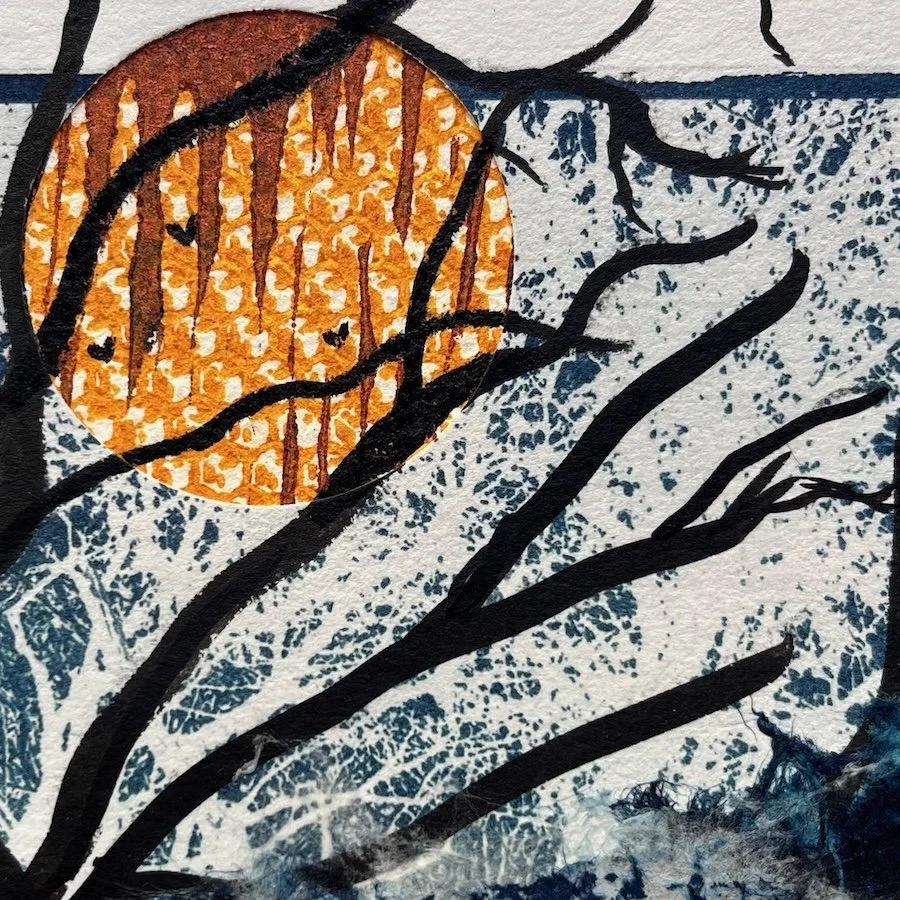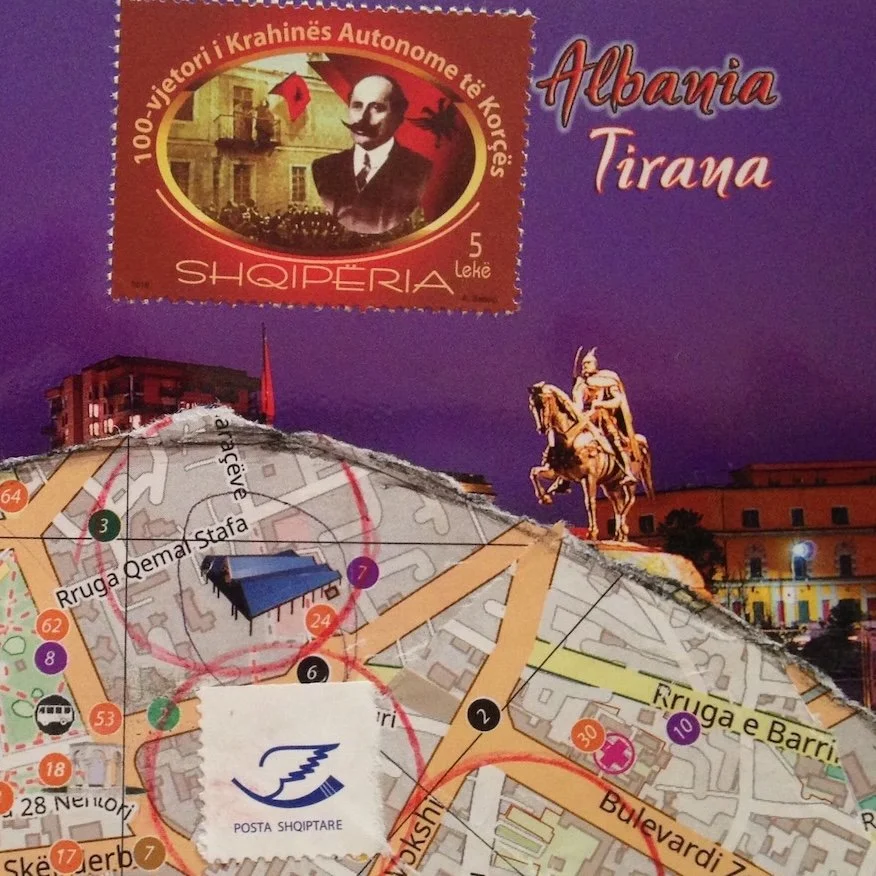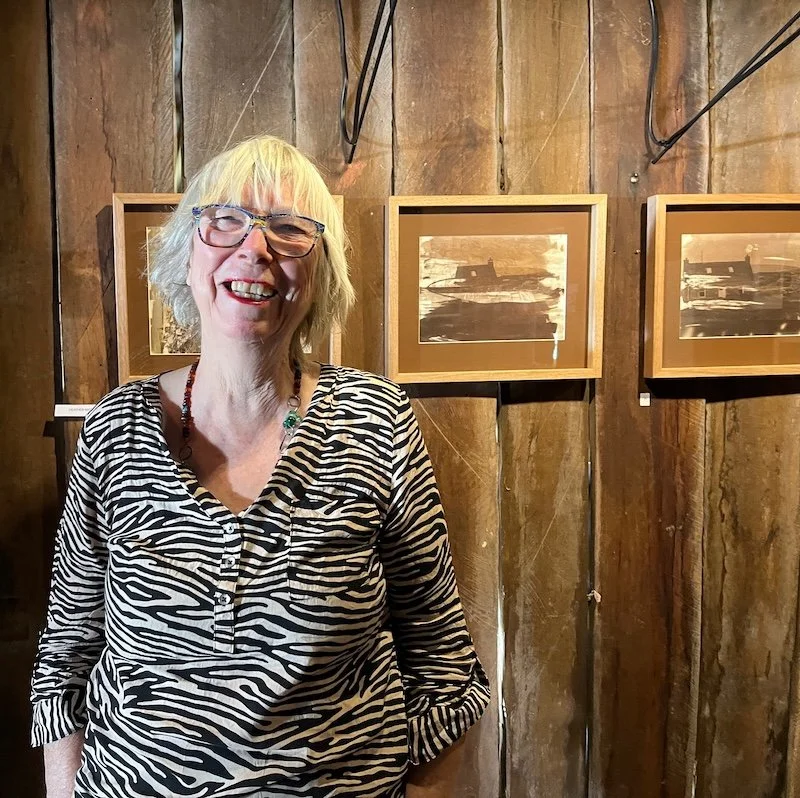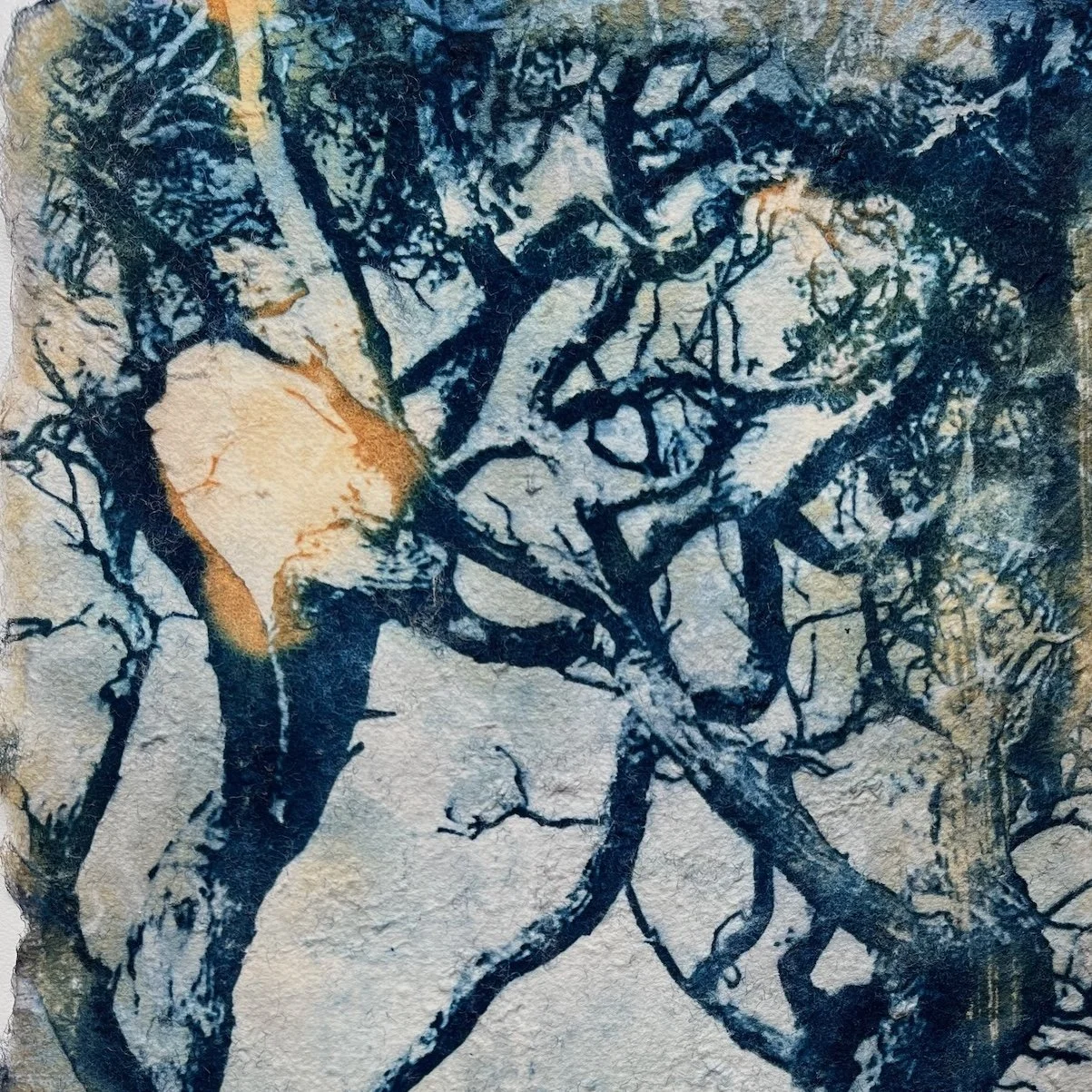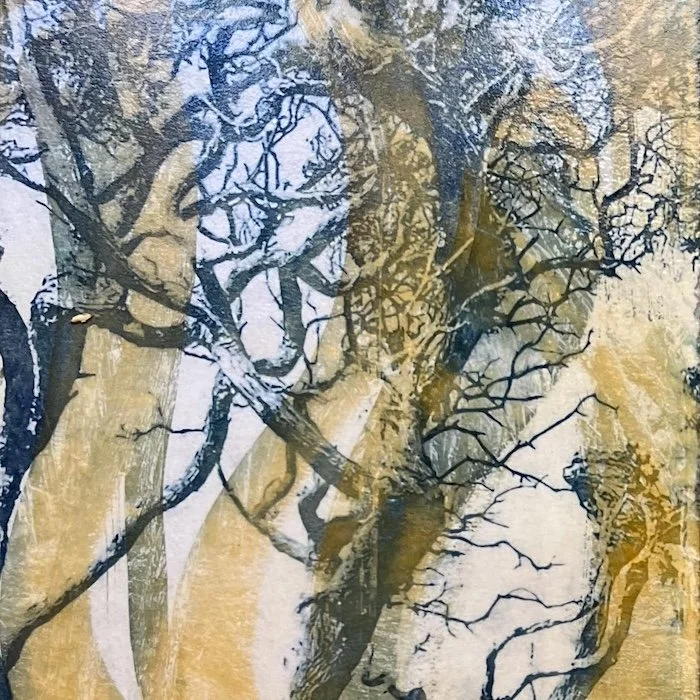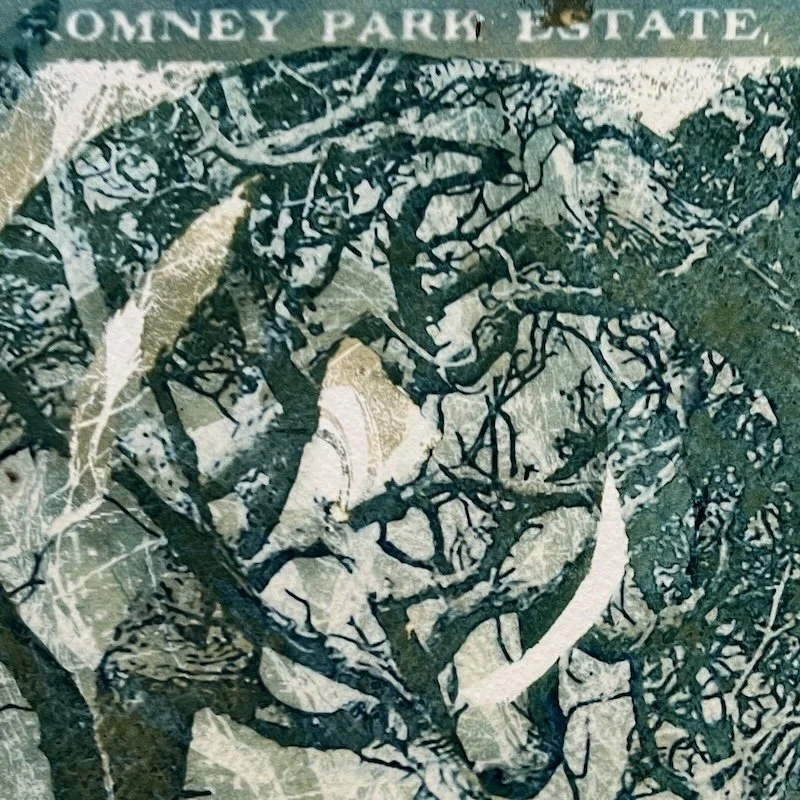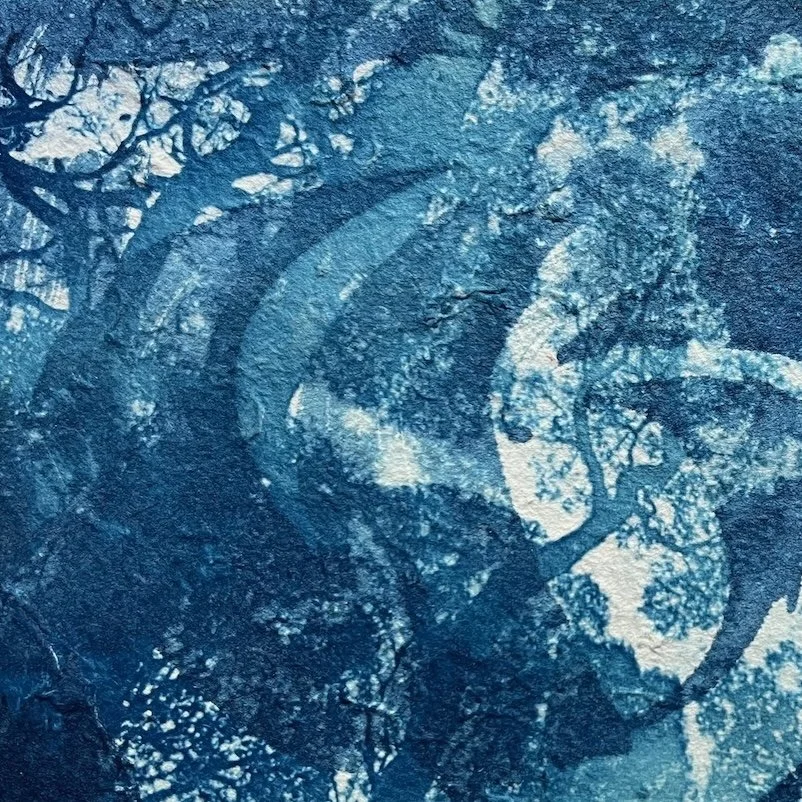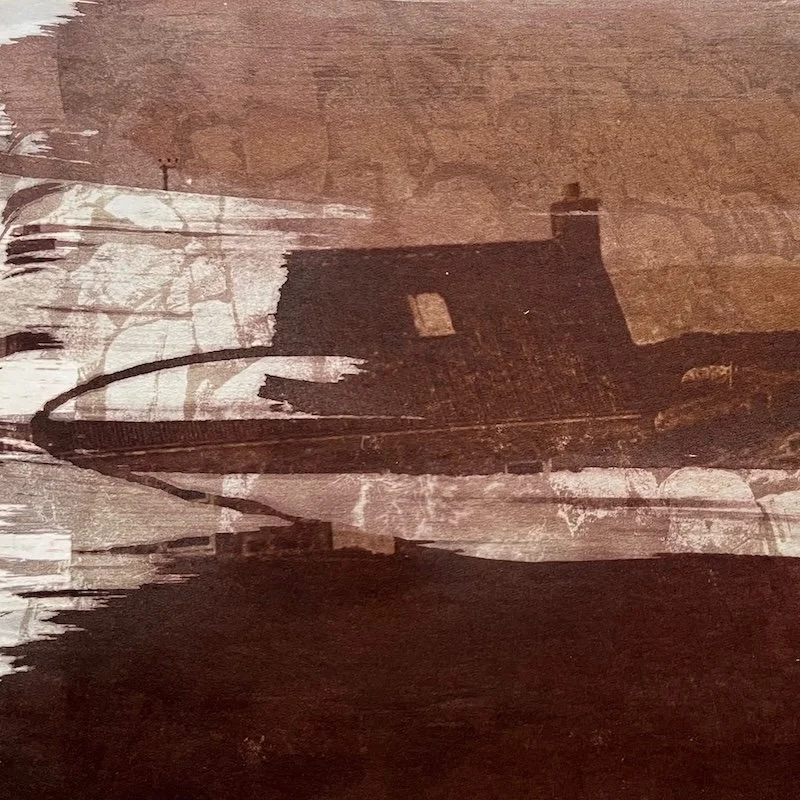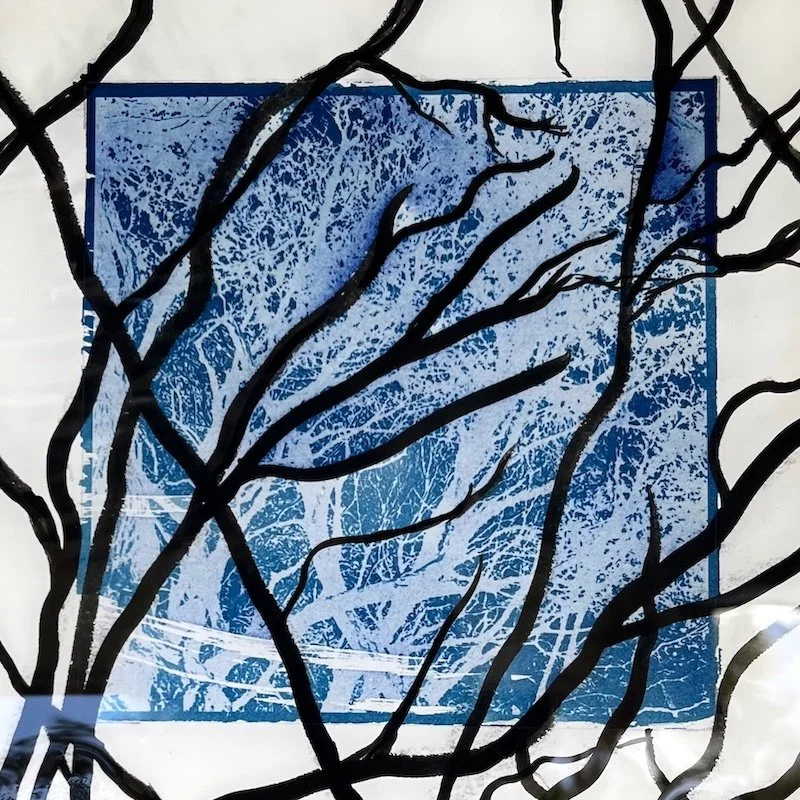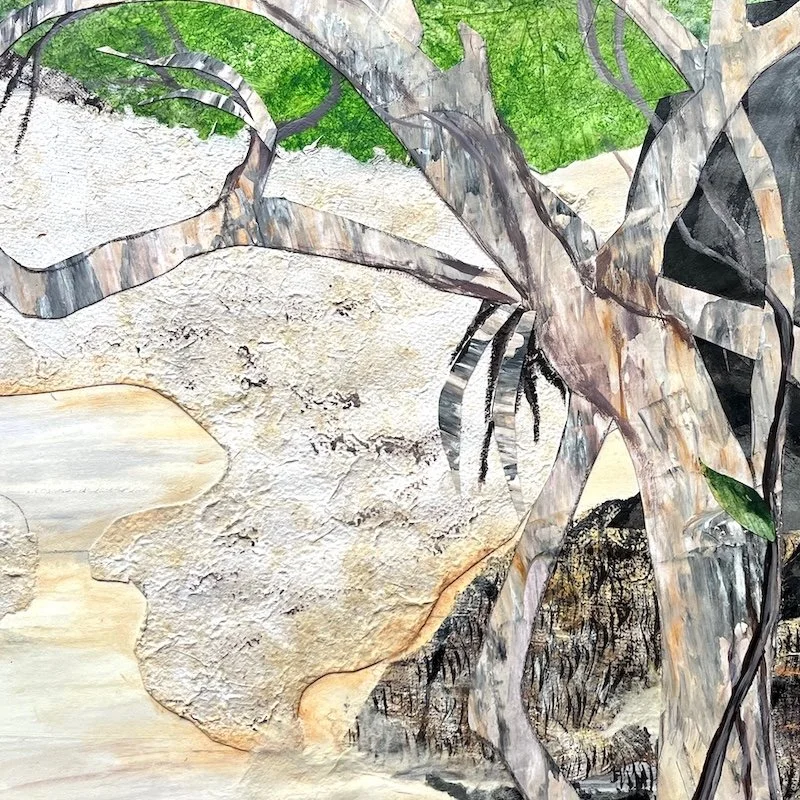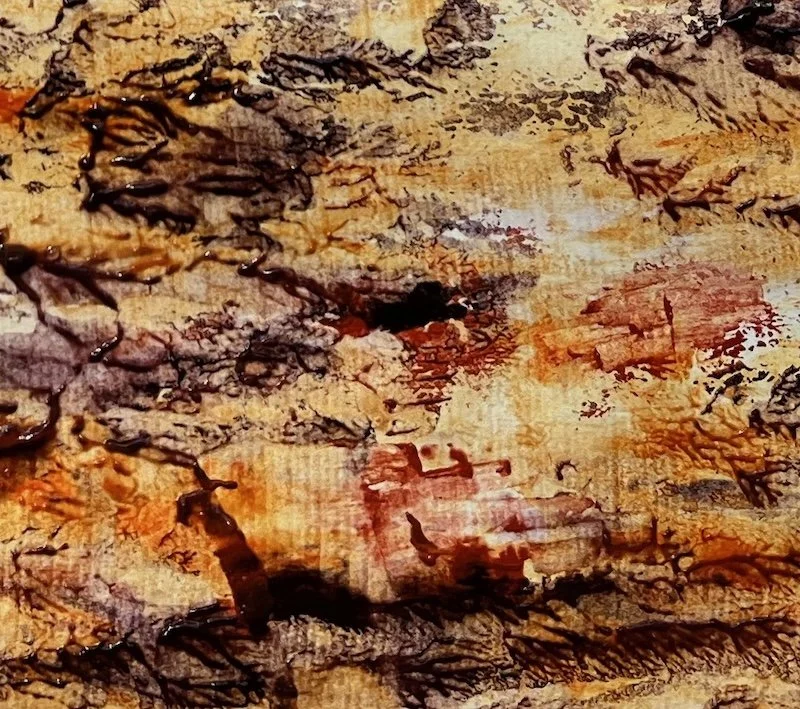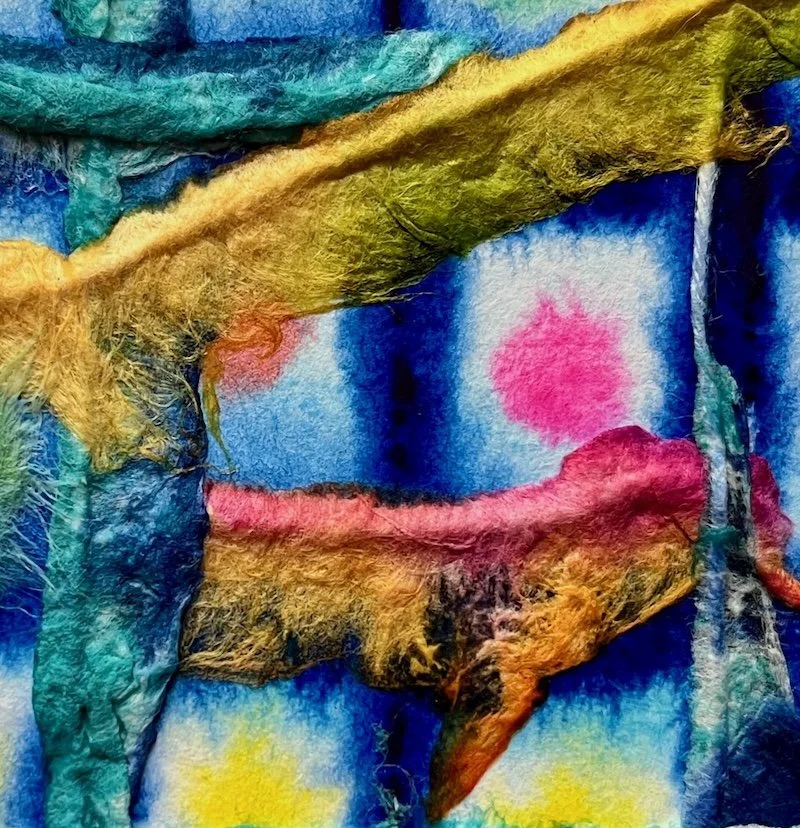I’ve been considering my love/hate relationship with social media. Is this constant connection to my phone and its tendrils of addiction, a seduction? Am I in danger of becoming lost in space? This new artwork has become a presentient, a reminder to be vigilant with myself. To love the idea of a ‘hive’ connection yet be wary of the consequences.
Bunker Down
Fifty years ago Albania’s paranoid dictator, Enver Hoxha had hundreds of thousands of bunkers built throughout his country. Two of these have been transformed into Bunk’Art museums where art gives voice to the unspeakable so that healing can happen. I think of the term ‘bunker down’ when I imagine creating space and time to dream the future forward as a catalyst for change.
Circularity
I never knew that eight years of creating blogposts would be a long term project with an approaching end date. My compulsion to archive my blogposts into hardback books signals my project is nearing completion to make way for new directions in my artmaking. The project has come full circle, what began as online documentation is ending the same way.
What The Sea Saw
What the eye sees might be a little different from what a high resolution scanner picks up. Experimenting with photograms on lumen prints means the images are ‘fixed’ through the lens of the digital scanner. While analogue photographic processes are used to create the print, the final image captures what the eye cannot discern. Perhaps it is what the sea sees.
Slide Nights and Photo Days
Looking back to where I was three years ago has shown my how much travel I crammed into 2022. Its like reliving my childhood slide nights as I compile a year of blogposts into my Year of Sundays 2022 blogpost book. I get to relive all those memories and keep them to reread at my leisure, analogue book style.
Lightness of Being
Introducing light into my landscapes has helped sustain me when the world appears to be mired in darkness and destruction. Working with tree images is grounding; their roots deep in the ground, leaves dancing in the light. They inspire me to bring a lightness of being into my creative offerings..
Something to Write Home About
The creative process can be addictive and like any addiction has its highs and lows. Yet turning up for yourself in small ways eventually gives you ‘something to write home about’ even if it is only that you made something for yourself to enjoy.
Chasing Elusive Butterflies
How do you connect with your creative self? Sometimes it can feel like you’re always chasing elusive butterflies, trying to make works that you love and that resonate. Spending time regularly with your materials means ideas are more likely to suggest themselves. But it might take stubborn doggedness to keep going.
Moving the Goalposts
Success is when your next project springboards off the work you’re currently making. After resolving the niggling doubts that your work would never quite ‘make the grade’, you can pause to look back on what you have achieved. Then it’s time to ‘move the goalposts’ and make new work that propels you forward again.
Wasting Time
Experimenting can often feel like a waste of time, especially when nothing quite works out like you had hoped. Pushing your materials past their limitations can end up with a total mess. Somewhere in all the chaos there may be a glimpse of a new direction to take. Then you know that all those perceived ‘failures’ were never a waste of time.
Home and Away
It can be challenging to occupy a space temporarily and create a sense of home. Even more challenging to return home and realise that your old space no longer ‘fits’. Harnessing the energy of homecoming can facilitate growth, experimentation and expansion.
Best Laid Plans
Adapt, experiment and survive. That’s my motto, especially when it comes to artist residencies where the unforeseen can completely derail your best laid plans. Getting sick when away from home can be very debilitating. Yet it can also give you the impetus to adapt and experiment, abandoning all measure of control, sometimes with surprising results.
Blueprints for Success
Experimentation is about taking risks. Pursuing a train of thought and organising the steps to get there gives you a better chance of success, even allowing for some ‘failures’ along the way. My blueprint for success is to plan, execute then let go of any expectations. It ‘s how I can adapt and improvise when at an artist residency.
Reconnaissance
Reconnaissance is a way to ‘hit the ground running’ when you are about to embark on an artist residency. I’ve been taking preliminary photos of the Moonah trees at Point Nepean National Park to see what the pictures suggest. This has led me to consider gridding up an image of the trees dancing together which I can then draw and print over as cyanotypes.
White Flag
When is it time to wave your own white flag, to surrender to circumstances beyond your control? I’ve been sick all week which has meant a surrendering of sorts, learning from the lessons of letting go and prioritising what is essential. It had me thinking about red flags and white. When and what to fight for and/or when to surrender.
Dare to Draw
Hanging onto ideas of how to draw can keep you in a strait jacket. It’s often the way we are judged as a child; if you can draw then you’ll make a good artist. If not, forget it. Leaning to scribble and muck around is a constant challenge. That’s where a drawing group can help you dare to draw. This has a flow on effect in your ability to embrace imperfection.
Years of Sundays
How do you archive your creative oeuvre? I’ve been writing weekly blogposts since 2019 and have decided to create a series of books for each of the last 6 years. It seemed like a really daunting task but once I got started the momentum kicked in. It’s about making a start and committing to the project.
Going Around the Edges
Long held beliefs about your own problem solving abilities can hold you back from experimenting and moving forward. I’ve discovered that instead of meeting the problem ‘head on’, it’s easier to go around the edges of things, whittling away until a solution presents itself. Like cutting with scissors to create silhouette shapes for collage.
Communities of Colour
I’ve been calming my turbulent thoughts with colour experiments to create a series of paste papers. The colours reminded me of the earth, of the bark of trees and how trees form communities the same as humans do. All hues, shapes and colours depending on where we grow, how we put down our roots, how we are all connected by the blessing of this earth.
With Love
Art activism is my way of maintaining optimism in the face of adversity. So many calamities are happening in the world I often feel overwhelmed and powerless. That’s where small grass roots projects like The Postcard Project – Finding Hope’ is a way I can add my artistic voice to keep hope alive.
